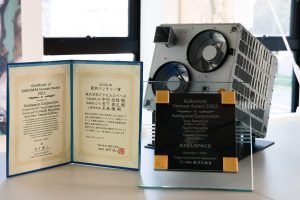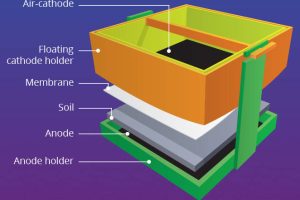Japan’s National Institute of Advanced Industrial Science and Technology (AIST) is spending Y6.5bn (~$41m) on a quantum computer from Massachusetts-based QuEra Computing. It will be installed alongside an Nvidia-based supercomputer called ABCI-Q. The aim is to “develop a hybrid quantum-classical computing platform, where quantum computing technology complements AIST’s ABCI-Q supercomputer with the goal of creating a platform for high-fidelity simulations ...
Tag Archives: Japan
UK quantum computing companies advised Go East
A new report is highlighting opportunities for UK quantum computing companies in Japan. The country is investing to accelerate the development of commercial applications in fields such as chemistry, financial services and logistics optimisation, highlights Intralink, a business development consultancy. The report has been prepared by as part of the UK-APAC Tech Growth Programme, which the company is delivering for ...
Four UK tech companies chosen for UK-APAC Tech Growth Programme
Four UK technology companies – including a space situational awareness specialist – have been selected to receive support from the UK-APAC Tech Growth Programme, to help accelerate plans for expansion in Japan. Aimed at UK technology startups headquartered in the UK, the programme is a government-backed initiative run by Intralink, a business development consultancy. The latest four companies to be ...
TSMC opens first of three Japanese fabs
On Saturday TSMC opened its first Japanese fab in Kumamoto, on the island of Kyushu. Japanese Prime Minister Fumio Kishida attended via video link and his government announced it would give TSMC $4.85 billion in subsidies to build a second fab in Kumamoto bringing total subsidies for the two fabs to $8 billion. Kishida said that the importance of the ...
Organic opto-electronics was hiding a fundamental rule
Researchers at Chiba University in Japan have uncovered a rule of organic solar cell materials that could guide their development, or at least stop people hunting for the impossible. It is that the exciton binding energy in a material is a quarter of its transport bandgap, regardless of the material. “A previously unpredicted nature of exciton binding energies in organic ...
Earth Observation microsatellite business raises $44m Series D
Axelspace Holdings, an Earth Observation and microsatellite specialist, has completed a ¥6.24 billion Series D funding round, equivalent to $44.0 million. Bringing the cumulative amount of equity financing to approximately ¥14.3 billion, the latest investments came from SMBC-GB Growth I Investment Limited Partnership, 31VENTURES, KURONEKO Innovation Fund and other venture capital and corporate investors. Axelspace says the funding will be ...
Updated: UV spectrometer is only 20mm long
Hamamatsu Photonics has introduced a UV model of its ‘micro’ spectrometer series. C16767MA is sensitive across 190 to 440nm with a typical resolution of 5.5nm (FWHM, so ±2.25nm to 50%). Update: scroll down for how it works, probably Vital statistics are 20.1 x 12.5 x 10.1mm and 5g. “For example, C16767MA can be mounted in water quality monitors, analysing the ...
Better fuel cell ion conductor reveals new science
New ion conductivity science has been revealed during research into a better electrolyte for solid-oxide and proton ceramic fuel cells, according to Tokyo Institute of Technology (TItech). The material is actually a ‘dual-ion conductor’, which allows both protons and oxide ions to defuse, and can “realise high total conductivity at lower temperatures and improve the performance of electro-chemical devices”, according ...
Bio-powered detector sounds the sewerage alarm
Researchers at Ritsumeikan University in Japan have made a simple sensor that can indicate when biodegradable waste from plant or animal sources is released into freshwater ecosystems. As well as the sensed contaminant, the organic mater is also the power source of this detector, which is essentially a novel floating fuel cell, with an LED on top. “The microbial fuel ...
2V blue OLED will work on Li-ion batteries
Tokyo Institute of Technology has demonstrated a blue OLED with a forward voltage of 1.97V at 100cd/m2, and still emitting at lower voltages such as 1.5V (right). “Conventional blue OLEDs typically require around 4V for a luminance of 100cd/m2, this is higher than the industrial target of 3.7 V – the voltage of lithium-ion batteries,” according to the Institute. Its ...
 Electronics Weekly Electronics Design & Components Tech News
Electronics Weekly Electronics Design & Components Tech News









